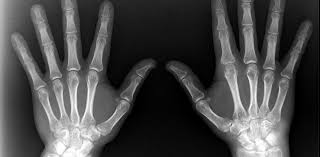HOW PSORIATIC ARTHRITIS AFFECTS DIVING

How Psoriatic Arthritis Affects Diving
Psoriatic arthritis is a chronic inflammatory joint disease that affects the joints and skin. Symptoms can range from mild to severe and include pain, swelling, and stiffness in the joints, as well as skin lesions. For diving enthusiasts, this condition can present specific challenges. Below, we explore how psoriatic arthritis can impact diving ability and what precautions should be taken.
Impact on Joints
Psoriatic arthritis causes inflammation in the joints, leading to pain and reduced mobility. This can affect a diver's ability to perform necessary movements, such as walking with heavy equipment, swimming, and maneuvering underwater. The joints most commonly affected include the knees, ankles, elbows, and wrists.
Considerations for Diving
Here are some important considerations for divers with psoriatic arthritis:
Medical Evaluation: Before diving, it is essential to obtain a comprehensive medical evaluation. A diving specialist can determine if the condition is sufficiently controlled to dive safely.
Pain Management: Effectively managing pain and inflammation is crucial. This may include the use of anti-inflammatory medications, physical therapy, and pain management techniques.
Adapted Equipment: Consider using adapted diving equipment that minimizes joint stress. For example, using softer fins or wetsuits that provide additional support.
Warm-Up and Stretching: Performing warm-up and stretching exercises before diving can help reduce joint stiffness and improve mobility.
Good Planning: Plan dives that do not require long walks with heavy equipment. Opting for dive sites with easy access to the water can be beneficial.
Safety in the Water
It is essential that divers with psoriatic arthritis feel comfortable and safe in the water. This includes:
Avoid Diving in Adverse Conditions: Difficult diving conditions, such as strong currents or cold water, can increase joint stress and exacerbate symptoms.
Clear Communication: Inform the dive buddy about the condition and any specific limitations. Clear and effective communication is vital for safety.
Constant Monitoring: Pay attention to any signs of discomfort or pain during the dive and be willing to abort the dive if necessary.
Conclusion
Psoriatic arthritis does not necessarily prevent diving but requires additional precautions and careful planning. With proper management of the condition and following medical recommendations, many people with psoriatic arthritis can safely and enjoyably participate in diving. It is always important to prioritize health and safety when engaging in aquatic activities.
Psoriatic arthritis is a chronic inflammatory joint disease that affects the joints and skin. Symptoms can range from mild to severe and include pain, swelling, and stiffness in the joints, as well as skin lesions. For diving enthusiasts, this condition can present specific challenges. Below, we explore how psoriatic arthritis can impact diving ability and what precautions should be taken.
Impact on Joints
Psoriatic arthritis causes inflammation in the joints, leading to pain and reduced mobility. This can affect a diver's ability to perform necessary movements, such as walking with heavy equipment, swimming, and maneuvering underwater. The joints most commonly affected include the knees, ankles, elbows, and wrists.
Considerations for Diving
Here are some important considerations for divers with psoriatic arthritis:
Medical Evaluation: Before diving, it is essential to obtain a comprehensive medical evaluation. A diving specialist can determine if the condition is sufficiently controlled to dive safely.
Pain Management: Effectively managing pain and inflammation is crucial. This may include the use of anti-inflammatory medications, physical therapy, and pain management techniques.
Adapted Equipment: Consider using adapted diving equipment that minimizes joint stress. For example, using softer fins or wetsuits that provide additional support.
Warm-Up and Stretching: Performing warm-up and stretching exercises before diving can help reduce joint stiffness and improve mobility.
Good Planning: Plan dives that do not require long walks with heavy equipment. Opting for dive sites with easy access to the water can be beneficial.
Safety in the Water
It is essential that divers with psoriatic arthritis feel comfortable and safe in the water. This includes:
Avoid Diving in Adverse Conditions: Difficult diving conditions, such as strong currents or cold water, can increase joint stress and exacerbate symptoms.
Clear Communication: Inform the dive buddy about the condition and any specific limitations. Clear and effective communication is vital for safety.
Constant Monitoring: Pay attention to any signs of discomfort or pain during the dive and be willing to abort the dive if necessary.
Conclusion
Psoriatic arthritis does not necessarily prevent diving but requires additional precautions and careful planning. With proper management of the condition and following medical recommendations, many people with psoriatic arthritis can safely and enjoyably participate in diving. It is always important to prioritize health and safety when engaging in aquatic activities.
